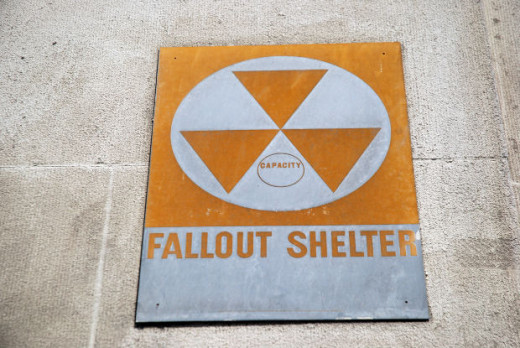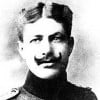SURVIVING AN ATOMIC BOMB ATTACK
- mbuggiehposted 12 years ago
0

During much of the Cold War---particularly during the early years of the Cold War Americans were a people very much concerned with a Soviet nuclear bomb attack on the United States. Air raid and "duck and cover drills" as well as municipal drills were common. Civil defense mindedness informed the American people.
The government responded with a variety of civil defense advertisements aimed at calming Americans by suggesting to them some ways to survive such an attack. Among them SIX STEPS TO SURVIVAL published in 1957 by the Federal Civil Defense Administration. The 6 steps included the following: (1) Prepare your family for emergencies; (2) Learn civil defense and public action signals; (3) Know the CONELRAD stations and keep them tuned on your radio; (4) Follow all evacuation procedures; (5) Build a home shelter; (6) Read the facts about radioactive fallout.
What is your assessment of these efforts? Might such efforts---redesigned to deal, for example, with a massive cyber attack on the United States, be warranted in the present? Keep in mind that what was told to the American people about how to survive a nuclear attack was in fact a Lie!
Today's technology bombs have become even more devastating there may be a few people who will be able to survive such a catastrophe like the president and his staff but I'm quite certain most people will not have the necessary megabucks to create such a protective defense structure.Plus the fact that the Soviet Union probably didn't have the capability to launch an attack on the US and were probably much more concerned with defence rather than offence.
The UUSR most certainly did have the capacity to attack the US. And, there is ample evidence. Among the best known: The Cuban Missile Crisis. Soviet missiles WITH warheads were intalled in Cuba.
But the missiles were installed in Cuba to defend the island, not to attack the US.
The historical record which now includes information/documents from the former Soviet Union and which also now includes information exchanged between Castro and Robert McNamara at the Havana Conference in 1992 indicates two things: (1) Soviet missiles in Cuba were offensive weapons and (2) Russian General Anatoly Gribkov verified the fact that the Russian military in Cuba during the crisis---equipped with tactical nuclear weapons and had the authority to use them in the case of a US land invasion of Cuba; a land invasion that was to result specifically from a US effort to deal with the Cuban Missile Crisis itself.
Further, and again resulting from post-collapse of Soviet Union disclosure we know the following: (1) Soviet Premier Nikita Khrushchev believed he could successfully counter the growing lead of the US in developing and deploying strategic missiles by placing Soviet intermediate-range nuclear missiles in Cuba; (2) Khrushchev wanted to bring West Berlin—the American/British/French-controlled democratic zone within Communist East Germany—into the Soviet orbit and believed that he could trade West Berlin for taking missiles out of Cuba; (3) Khrushchev was also reacting in part to the nuclear threat of obsolescent Jupiter intermediate-range ballistic missiles which the United States had installed in Turkey.
No one in Havana or in the Kremlin imagined that the US would engage in any unprovoked attack on Cuba. The missiles in Cuba resulted from misplayed Cold War politics."equipped with tactical nuclear weapons and had the authority to use them in the case of a US land invasion of Cuba."
I rest my case.There is no evidence of any large-scale land invasion being planned by the US government---particularly after the fiasco of the Bay of Pigs.
In fact, any significant first-strike including an invasion by US military was soundly rejected as not only a mistake in terms of US Cold War objectives, but also contradictory to US history and policy.
Remember, Kremlin and the Soviets anticipation or worry that the US might invade Cuba does not planned or probable invasion make.
Is it at all problematic that the Soviet Union was planning a nuclear first-strike against the US and in the Western Hemisphere as evidenced from their actions?Sorry, I forgot, you were best buddies with Cuba weren't you?
Excuse me whilst I split my sides laughing at -
"In fact, any significant first-strike including an invasion by US military was soundly rejected as not only a mistake in terms of US Cold War objectives, but also contradictory to US history and policy."
Actually all your history and policy involves first strikes.I strongly suggest that you read Sergei Khrushchev and Robert McNamara for serious accounts of the Cuban Missile Crisis and US-Soviet relations during the Cold War. And perhaps read some history of the Monroe Doctrine and its applications in the western hemisphere.
I know that bashing the US and its history---particularly during the Cold War is great international sport, but the fact is this: If the US had wanted to (a) invade Cuba or (b) destroy it with a nuclear first-strike, Cuba and Castro would have been relegated to the footnotes of history in October of 1962.I'd rather read none partisan commentary thank you.
And whom would you suggest to provide this "non-partisan" commentary? I am always looking for Cold War bibliographic and historiographic content.
LOL. Good comment.
If John believes that those sources have a bias, what does he recommend? I haven't seen a response yet, so it seems likely that he simply used that statement to try to discount the value of what you said. Otherwise, he'd provide his own sources. It's been two days now . . . Honestly, I'm always searching for new reading material too, and I'd like to see what he recommends. It's always nice to see opposing viewpoints.
You are absolutely right when you say that Cuba would have been a footnote in history if America had chosen to end the crisis with military force.
Best wishes.Unfortunately "notifications" are not infallible and I didn't see the response.
As my thoughts are influenced by reading many different sources over many years I can't point you to specifics, much as I'd like to.
If the US had chosen to end the Cuban crisis with military force you would have lost the support of much of the world, which is why you chose not to do so.Thanks for your comments. And I agree, if sources exist, then list them.
I must say that it is amusing to me to suggest (as has been in this conversation) that the US chose not to use military force in Cuba because it would have lost the support of the "much" of the world. Really?
The Cuban Missile Crisis was resolved because the Soviets---knowing that Kennedy was a hawk surrounded by many hawks, orchestrated a measured effort to stand down AND save face. This is very evident in the now-famous 2 comunications sent by Krushchev to Kennedy: one threatening; the other begging for resolution without war.
Civil defense information was helpful--more particularly for American morale than for national security in what often seemed to be an impossible reality to manage.
In case of a nuclear bombing attack.
Step one: Sit down. Nuclear attacks can be quite stressful and it's best to take in these attacks while seated.
Step two: Place head between legs. Minimizing body surface is key, also sitting under strong support beams such as doorways are a good idea.
Step three: Once head is between legs, kiss your ass good bye.Why don't you ask the Japanese? Why don't you ask the ones that died let's see which tips they will give us. You're talking about a nuclear bomb attack as if the probability for us to stay alive was greater than the probability to die.
Depends on where you live. I'm Northern California...I figure I'm pretty safe unless I get fallout from LA/SF.
Realistically very few people would survive a nuclear strike to their country over the long term. The plan was there mainly to provide a feeling or control over the situation (which was largely illusory).
- mbuggiehposted 12 years ago
0
If my information and assessments are inaccurate, then please, list and annotate the secondary and primary sources that illustrate those specific inaccuracies and that offer contradictory factual information and contradictory assessments.
OK, but wait a week or so. I'm busy packing up my home and moving at the moment and that takes priority over an argument with somebody who is so convinced he is right that it'll be a waste of my time any way.
OK, but meanwhile you might like to tell me why the USSR felt it necessary to put weapons into Cuba.
SOME FIRST THOUGHTS:
Krushschev's perception that Kennedy was weak and unable and/or unwilling to stand up to Soviet aggression in the western hemisphere---and that nuclear weapons parked in Cuba and aimed at the US would force Kennedy to relinquish control of West Berlin; Krushchev's concerns about growing missile gap---with USSR on losing end, and how that was affecting his domestic political survival; Krushchev's worries about losing Castro as an ally---an ally who provided an offensive foothold in the western hemisphere (for the USSR) and just 90 miles from the US.
Related Discussions
- 256
A Warning From Biden Or Just Another Confused Statement?
by Sharlee 2 years ago
Biden on Thursday when addressing the Democratic Senatorial Campaign Committee let loose with this --- This statement appears to be when Biden went off script. He was closing and decided to add this ....."So I guess — I said I was not going to talk very long; I’ve already talked too...
- 116
Palin Says Sputnik Brought Down Communism
by Dan B. Cooper 14 years ago
In criticizing the State of the Union address and in particular Obama's reference to this country needing a "Sputnik moment", Sarah Palin had another one of her "moments" yesterday on "On The Record with Greta Van Susteran". Here's what she said: "He needs to...
- 80
Revival of the Brezhnev Doctrine
by mbuggieh 11 years ago
LIGNET notes today that: "Russian President Vladimir Putin’s actions in Ukraine demonstrate a newfound willingness to use economic, political and military pressure to maintain the Kremlin’s hold over former Soviet states, a modern-day version of the Brezhnev Doctrine of the 1960s. A lack of...
- 99
Is Israel about to attack Iran?
by Ralph Deeds 13 years ago
The Sunday NY Times Magazine cover story this week reports on the current state of the standoff between Iran, Israel, the US and other countries over Iran's nuclear facilities and intentions. It's a very frightening article because it says that an attack by Israel on Iran may be imminent and could...
- 12
Will Israel Strike Iran's Nukes
by Writer Fox 13 years ago
I know that everyone in the US is focused on the presidential elections and the hurricane, but there is a storm brewing in the Middle East that could potentially effect every nation on the planet. Wherever you live, what do people in your country say about the possibility of an Israeli or...
- 15
Are we closer than ever of the WW3?
by pimentelteixeira 13 years ago
Are we closer than ever of the WW3?For the past few months we have seen countries in the Middle East rising against its leaders, and once again Western countries are involved in Middle East affairs; with the Arab League control being question day after day, and the tension rising minute after...











